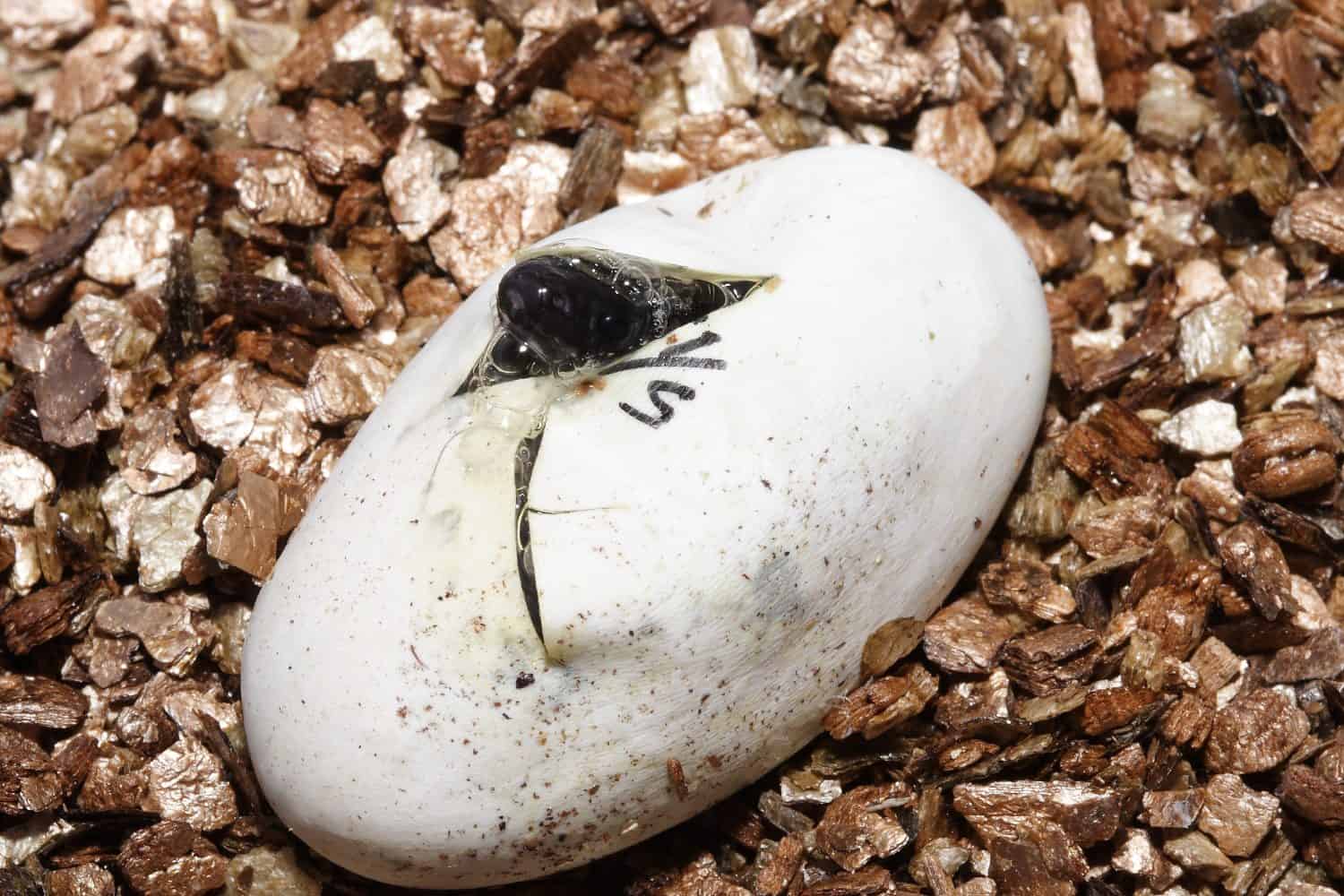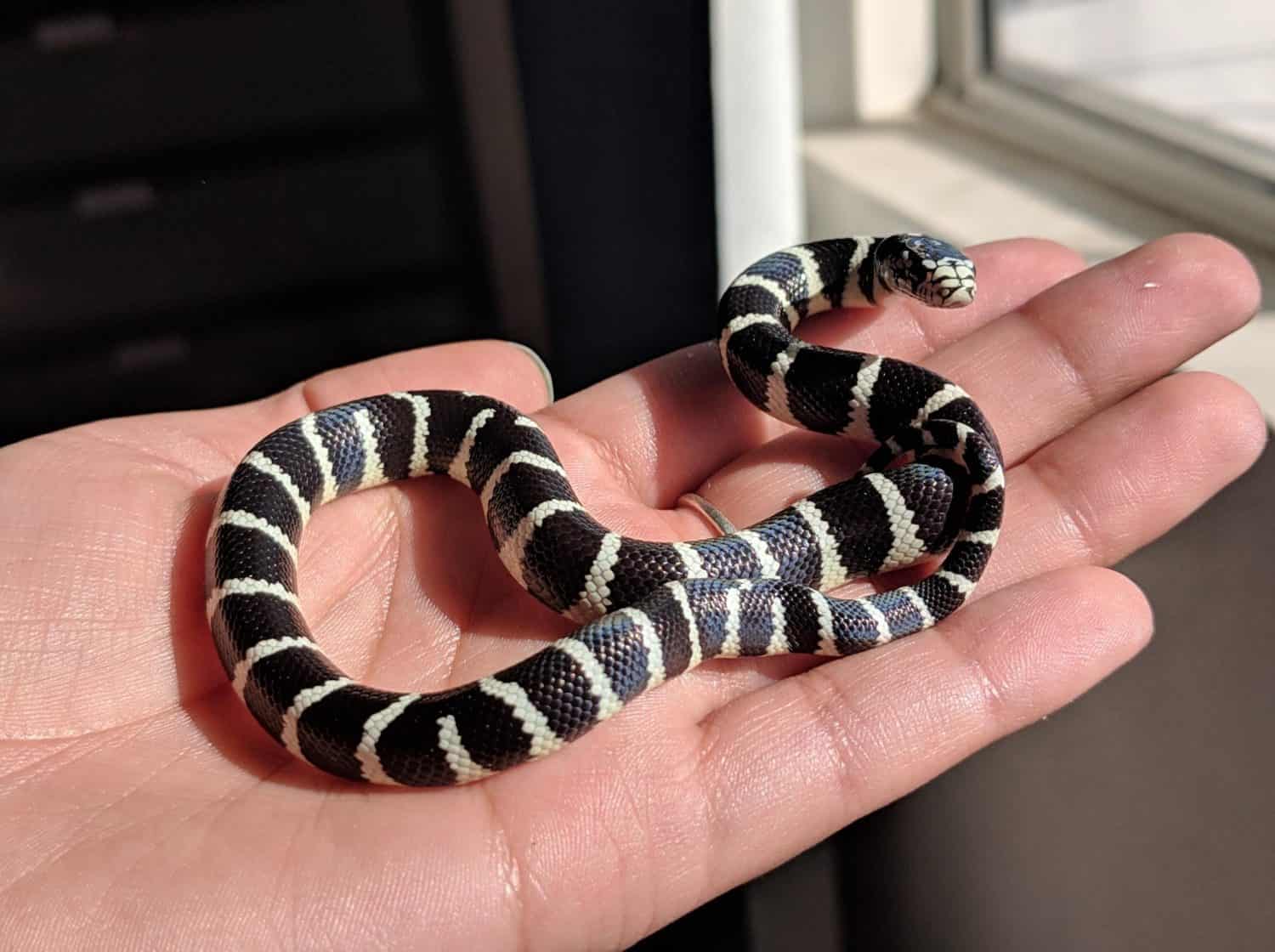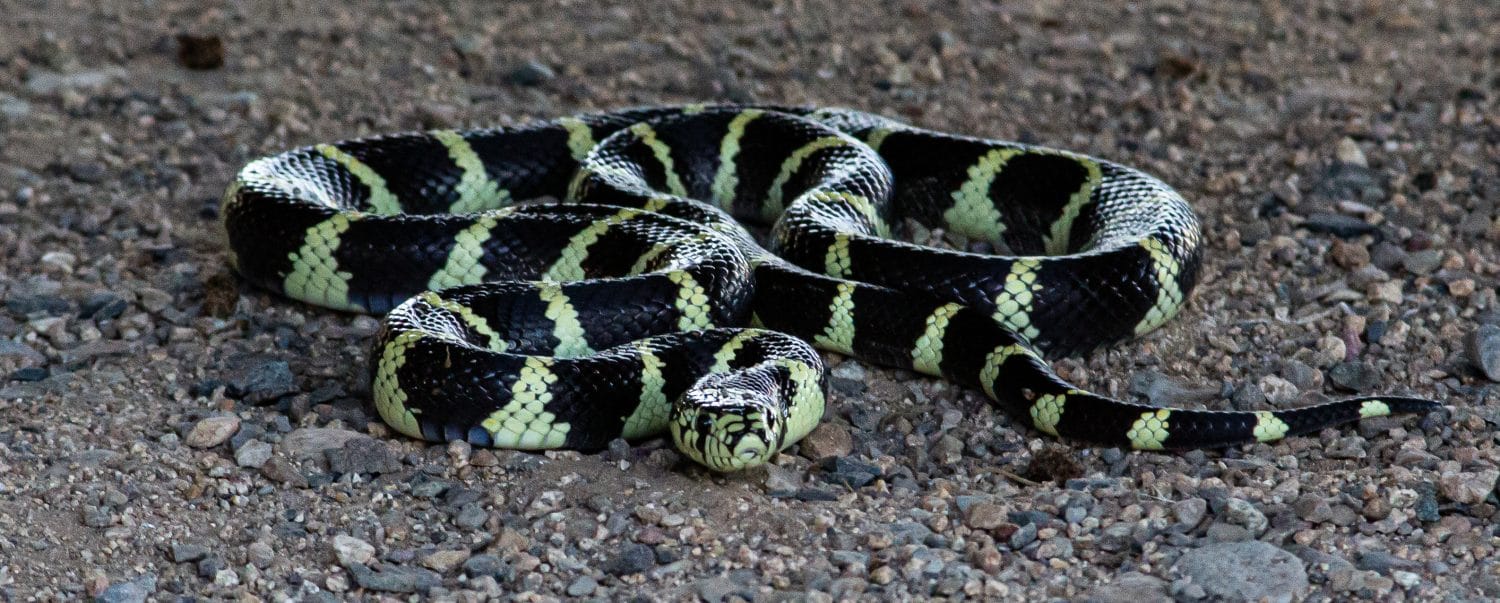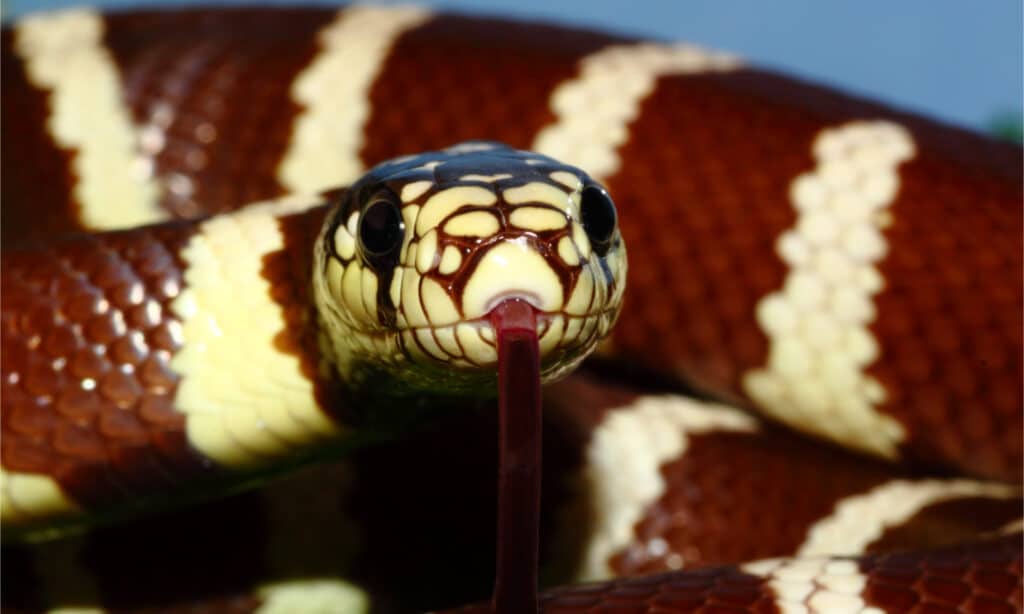King snakes are one of the most common snakes in North America. They aren’t venomous but kill their prey through constriction. People enjoy keeping them as pets for their vibrant color patterns, manageable size, and calm behavior. Baby king snakes are easy to find for sale from breeders.
There are many different species of kingsnakes, including the milk snake. According to the San Diego Zoo, king snakes can grow anywhere from 14 to 84 inches long and weigh up to 3.3 pounds. Read on to see pictures and learn some remarkable facts about baby king snakes.
1. Baby King Snakes May Have a Different Color Pattern Than Their Parents

King snakes can be born with colors and pattern variations different from their parents.
©Rusty Dodson/Shutterstock.com
King snakes have varying colors and patterns. Their scales are glossy and usually dark, with bands or stripes in contrasting colors. Sometimes, the stripes are broken up into dots. The scarlet kingsnake sometimes appears similar to a coral snake, causing people to mistake it for the venomous snake.
Baby king snakes inherit genes from each parent, contributing to their unique color combinations. They can be brown, yellow, red, white, or black. This combination of inherited genes can cause the hatchlings to have a completely different pattern and color from both of their parents.
2. Baby King Snakes Often Hatch Inside Rotted Logs

King snake mothers lay their eggs in rotting logs or other hidden locations.
©USFWS Pacific Southwest Region / CC BY 2.0 DEED – License
King snakes breed in the spring from March to May. By early summer, the mothers lay eggs in hidden, protected areas such as in a hollow inside a rotted log, under leaf debris, or in the ground. The eggs incubate for about one and a half to two months, and the hatchlings emerge in late summer.
3. Baby King Snakes Are Born With an Egg Tooth

Snakes use their small egg tooth to cut slits in their egg so that they can poke their heads out and hatch.
©Borhuah Chen/Shutterstock.com
Baby king snakes are born with a small egg tooth which they use to slit open their egg and emerge. An egg about to hatch will have several slits in it where the baby snake has begun to work its way out. The snake will lose its egg tooth shortly after birth.
4. Baby King Snakes Are Independent Right After Birth

King snake hatchlings must fend for themselves as soon as they are born.
©Brenda Lailani Gonzalez/Shutterstock.com
After the mother king snake lays her eggs, she slithers away from the nest. The father snake is not in the picture either. He leaves soon after mating.
Like many snake species, baby king snakes must fend for themselves as soon as they are born. Luckily, although they are small, the hatchlings are born ready and able to hunt for their meals.
5. Baby King Snakes May Have Up to 28 Siblings

King snake mothers lay clutches of 3 to 29 eggs.
©wolfness72/Shutterstock.com
Female king snakes lay clutches of 3 to 29 oblong-shaped eggs. The oblong shape gives the snake room to grow inside the egg. Unlike a bird’s eggs, snake eggs don’t have a hard shell but are leathery and flexible. Snakes lay many eggs because hatchlings are vulnerable until they grow to maturity. Laying multiple eggs ensures at least some of the babies will survive.
6. King Snakes Shake Their Tails to Mimic Rattlesnakes

Even baby king snakes will shake their tails to mimic a deadly rattlesnake when feeling threatened.
©Amanda Wayne/Shutterstock.com
Rattlesnakes are one of the most notorious reptiles in the world. Although king snakes are non-venomous, they have a defense mechanism to scare off attackers. King snakes know how to shake their tails, mimicking a dangerous rattlesnake. This is called Batesian mimicry, and it’s when a harmless species evolves to be able to copy the warning signals of a dangerous species.
7. They Get Their Name From Eating Other Snakes

Kingsnakes eat other snakes and are immune to the venom.
©MattiaATH/Shutterstock.com
Even newly hatched king snakes will feed on other snakes. King snakes can even feed on venomous snakes such as copperheads and rattlesnakes. When king snakes prey on other snakes, they will bite the other snake in the head and coil themself around the snake’s body, constricting it to death. King snakes are immune to the venom. Because other snakes are a main food source, they were given the name “king snakes.”
Summary of 7 Incredible Facts About Baby King Snakes
| Number | Fact |
|---|---|
| 1 | Baby King Snakes May Have a Different Color Pattern Than Their Parents |
| 2 | Baby King Snakes Often Hatch Inside Rotted Logs |
| 3 | Baby King Snakes Are Born With an Egg Tooth |
| 4 | Baby King Snakes Are Independent Right After Birth |
| 5 | Baby King Snakes May Have Up to 28 Siblings |
| 6 | King Snakes Shake Their Tails to Mimic Rattlesnakes |
| 7 | They Get Their Name From Eating Other Snakes |
The photo featured at the top of this post is © wolfness72/Shutterstock.com
Discover the "Monster" Snake 5X Bigger than an Anaconda
Every day A-Z Animals sends out some of the most incredible facts in the world from our free newsletter. Want to discover the 10 most beautiful snakes in the world, a "snake island" where you're never more than 3 feet from danger, or a "monster" snake 5X larger than an anaconda? Then sign up right now and you'll start receiving our daily newsletter absolutely free.
Thank you for reading! Have some feedback for us? Contact the AZ Animals editorial team.






